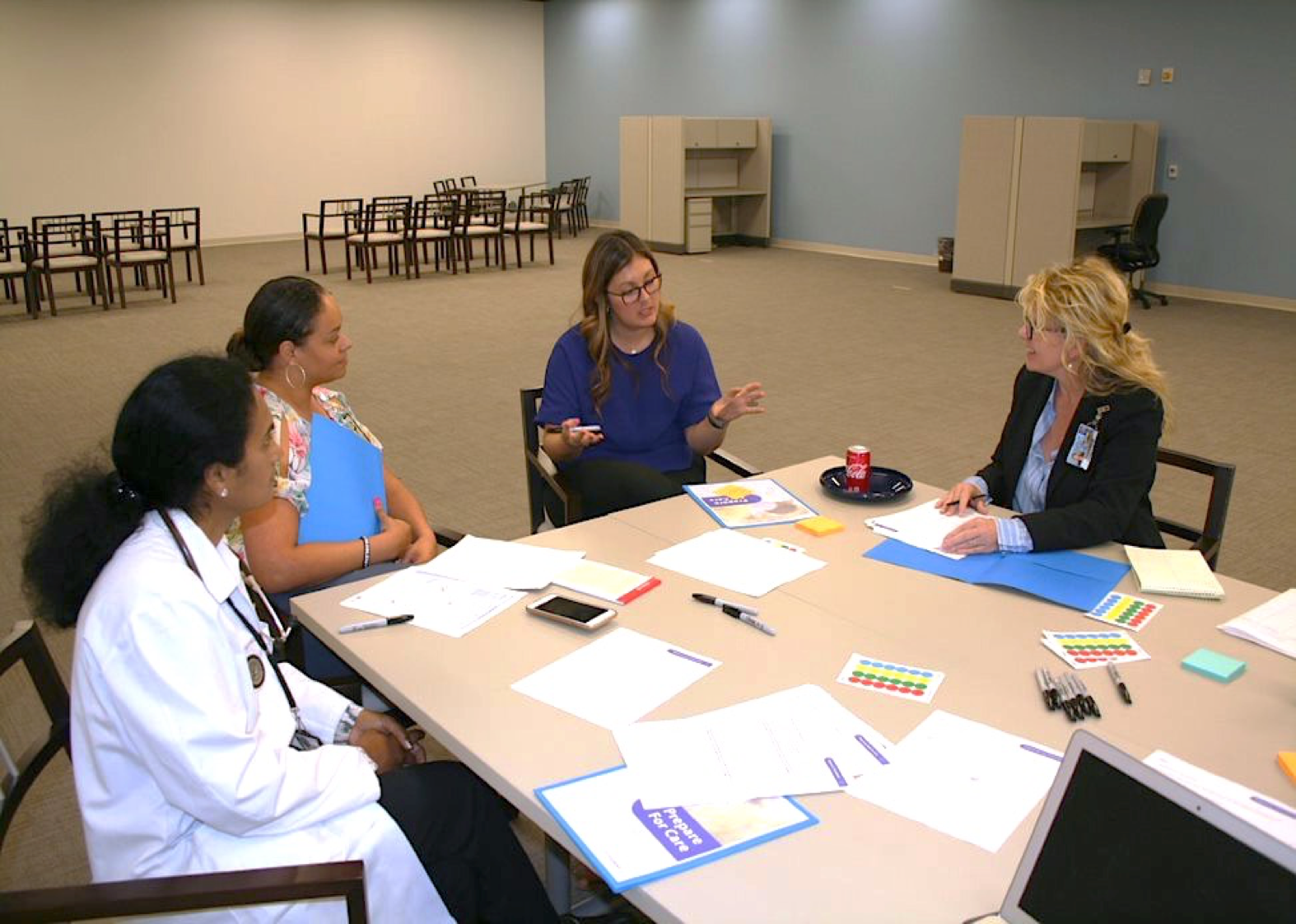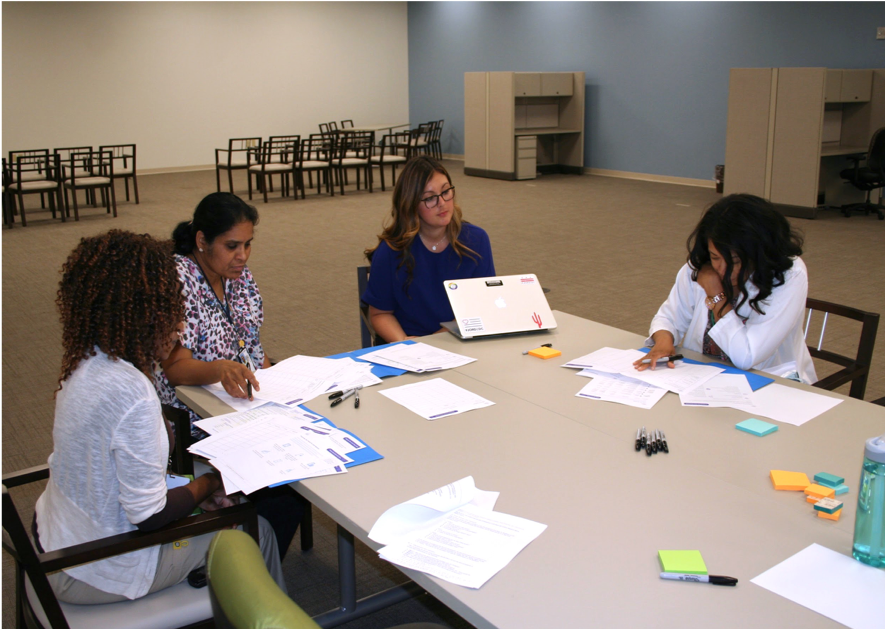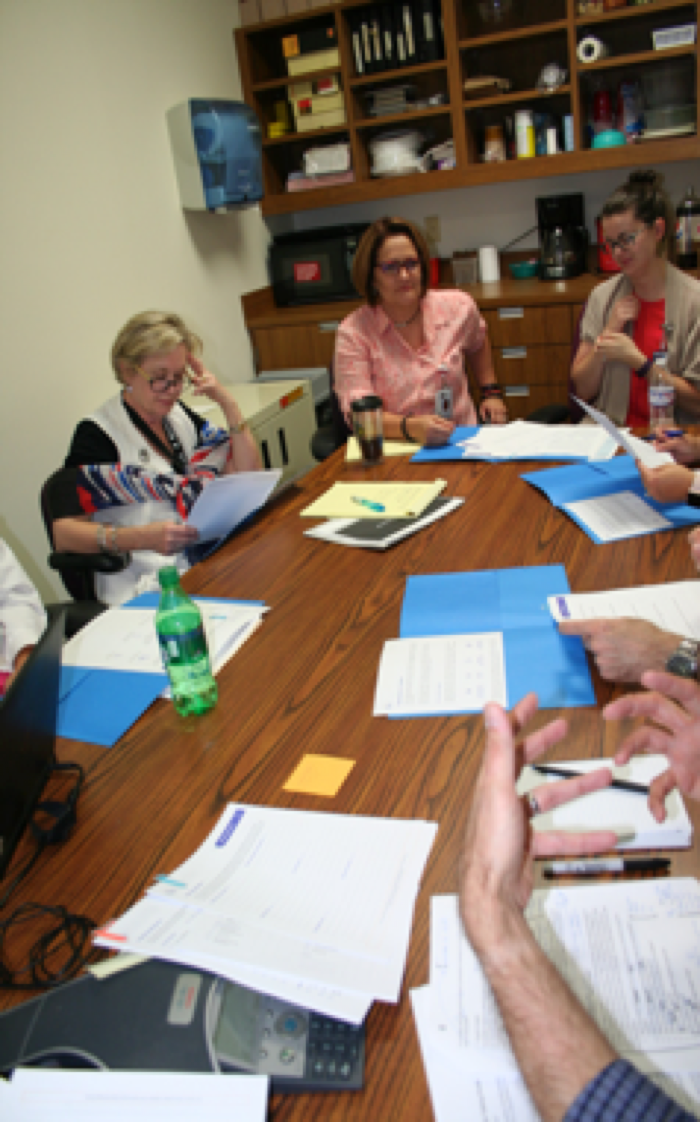< Work
CLIENT
DEPARTMENT OF VETERANS AFFAIRS
PROJECT
SOMETHING
INDUSTRY
HEALTH AND HUMAN SERVICES
Creating Balance and Support While Providing Care
Role
Service Design Lead
Challenge
The discharge process is frustrating and confusing for patients, their families, and caregivers.
Outcome
This project focused on a caregiver’s experience after a patient is discharged from a medical center. Healthcare services physical prototype and process transformation.
Patients who are the focus of healthcare providers during their hospital stays, often become the focus of caregivers once they are discharged.
Caregivers can be professionally trained, but in this case, caregivers are friends, family members, neighbors, or a spouse.
Research identified the responsibilities and challenges caregivers encounter once patients are discharged, and the importance of empowering caregivers to be an active and informed participant in a patient’s medical journey.
Human-centric discovery was conducted through virtual interviews, participatory design sessions, pain point prioritization workshops, and current state alignment sessions with nurses, doctors, and patient experience representatives.
Weekly one-hour sessions were held with rotating nurses, doctors, social workers, and patient advocates to establish them as active participants in the process, and obtain real-time learnings across different perspectives.
Navigating Current State
Interviews, on-site observations, and focus groups with caregivers, hospital staff, and support network representatives helped uncover pain points and valuable insights about the challenges experienced in the transition from hospital to home.
This focus was researching and understanding caregiver needs through specific problems, ensuring their well-being, and sustaining their ability to provide care.
The main challenges caregivers faced post-hospital discharge include:
emotional toll of accessing and understanding educational materials for providing care at home
navigating webs of external healthcare support systems
struggles communicating needs and connecting with caregiver support groups
strains across finances, physical endurance, and logistics



Human-centric discovery was conducted through virtual interviews, participatory design sessions, pain point prioritization workshops, and current state alignment sessions with nurses, doctors, and patient experience representatives.
Weekly one-hour sessions were held with rotating nurses, doctors, social workers, and patient advocates to establish them as active participants in the process, and obtain real-time learnings across different perspectives.
Emerging Themes
From managing medication schedules, to coordinating follow-up appointments, and providing emotional support, caregivers were overwhelmed with navigating a foreign maze of responsibilities without a clear roadmap.
Observations and interactions with caregivers and medical center staff revealed the need for accessible, printed or digital, information that could guide caregivers through providing care for a patient, a supportive resources to aide them in this new role.
This work focused on researching and understanding caregiver needs through specific problems, ensuring their well-being, and sustaining their ability to provide care.
Weekly one-hour sessions were held with rotating nurses, doctors, social workers, and patient advocates to establish them as active participants in the process, and obtain real-time learnings across different perspectives.
Validating Opportunities
Caregivers should be, and often want to be, an active and informed participant in the discharge process, both at the medical facility and once the patient returns home.
The opportunity exists to support caregivers from the time of patient admission, throughout the inpatient stay, and after discharge by demonstrating that hospital staff and larger medical center systems are there to empower them.
In light of these findings, there is an urgent call for the implementation of comprehensive support systems to alleviate the burdens faced by caregivers post-hospital discharge. This includes targeted interventions to address caregivers' emotional well-being, improved communication channels between caregivers and healthcare providers, and practical assistance with navigating logistical hurdles.
Through interviews, on-site observations, and focus groups, caregivers, hospital staff, and support network representatives helped uncover pain points and valuable insights about the challenges experienced in the transition from hospital to home.
The main challenges caregivers faced post-hospital discharge include:
accessing educational materials for providing care at home
navigating external healthcare support systems
connecting with caregiver support groups
Emerging Responsibilities
One of the predominant themes that emerged was the overwhelming burden of responsibilities shouldered by caregivers.
From managing medication regimens to coordinating follow-up appointments and providing emotional support, caregivers often find themselves navigating a complex maze without a clear roadmap.
Themes and Insights
Intermediate
Add your pricing strategy. Be sure to include important details like value, length of service, and why it’s unique.
Advanced
Add your pricing strategy. Be sure to include important details like value, length of service, and why it’s unique.
Silver
Add your pricing strategy. Be sure to include important details like value, length of service, and why it’s unique.
Gold
Add your pricing strategy. Be sure to include important details like value, length of service, and why it’s unique.
Make it
It all begins with an idea. Maybe you want to launch a business. Maybe you want to turn a hobby into something more. Or maybe you have a creative project to share with the world. Whatever it is, the way you tell your story online can make all the difference.
Don’t worry about sounding professional. Sounds like you. There are over 1.5 billion websites out there, but your story is what’s going to separate this one from the rest.
Take a minute to write an introduction that is short, sweet, and to the point.
Make it stand out
It all begins with an idea. Maybe you want to launch a business. Maybe you want to turn a hobby into something more. Or maybe you have a creative project to share with the world. Whatever it is, the way you tell your story online can make all the difference.
FAQs
This is a frequently asked question?
This project focused on a caregiver’s experience after a patient is discharged from a medical center.
I designed a solution defined by understanding and acknowledging caregiver needs through specific problems, ensuring their well-being, and sustaining their ability to provide care. I was the lead service designer on a team to support and partner with the client experience office in charge of the inpatient discharge to home process.
My responsibilities on this project included: Collaborating with and leading the core and client team through each phase of the project Determining how we approached project activities, including discovery research, prototype design and testing, and solution delivery
This is a frequently asked question?
It all begins with an idea. Maybe you want to launch a business. Maybe you want to turn a hobby into something more. Or maybe you have a creative project to share with the world. Whatever it is, the way you tell your story online can make all the difference.
This is a frequently asked question?
It all begins with an idea. Maybe you want to launch a business. Maybe you want to turn a hobby into something more. Or maybe you have a creative project to share with the world. Whatever it is, the way you tell your story online can make all the difference.
This is a frequently asked question?
It all begins with an idea. Maybe you want to launch a business. Maybe you want to turn a hobby into something more. Or maybe you have a creative project to share with the world. Whatever it is, the way you tell your story online can make all the difference.
CLIENT – Department of veterans affairs
PROJECT TYPE – customer …
Healthcare services physical prototype and process transformation
Overview
This project focused on a caregiver’s experience after a patient is discharged from a medical center. I designed a solution defined by understanding and acknowledging caregiver needs through specific problems, ensuring their well-being, and sustaining their ability to provide care.
I was the lead service designer on a team to support and partner with the client experience office in charge of the inpatient discharge to home process.
My responsibilities on this project included:
Collaborating with and leading the core and client team through each phase of the project
Determining how we approached project activities, including discovery research, prototype design and testing, and solution delivery
Challenge
The patient hospital discharge process is frustrating and confusing for patients, their families, and caregivers. The main challenges faced during this process are:
accessing educational materials for providing care at home
navigating external healthcare support systems
connecting with caregiver support groups
Process
Initial discovery and baseline research was conducted through virtual interviews and working sessions with nurses, doctors, and patient experience representatives.
The second phase of research focused on testing the prototype, which occurred primarily on-site with nurses, doctors, social workers, patients, and caregivers.
Additional prototype testing occurred virtually on weekly calls with a healthcare team of rotating participants.
Using human-centered methodologies, I aimed to understand the current-state experience of patients being discharged from medical centers to their homes.
My process drove empathy for the challenges Google stakeholders and external customers faced, established group consensus on top business priorities, and created a plan for elucidating customer and business value across each product line.
I achieved this using a diagram exercise that visually separated business and customer outcomes, storylines, and Pega capabilities into different quadrants to develop an individual product and holistic experience strategic visioning story, called Digital Lives.
RESULTS
Secretary of this organization prioritized this prototype to be piloted at medical centers within their network – including the facilities that participated in the research and design.
Immediate efficiencies with social workers facilitating proactive conversations and providing information to caregivers were documented.
Prototype was presented by the Acting Executive Director for Patient Experience at a Transforming Healthcare through Patient Experience conference and was shared with the Elizabeth Dole Foundation.
Project outputs led to expansion of scope within existing work steams, helping to capture more of the funded value of the contract, and led to new paid engagements the business.
It wasn’t toward the second round of testing that I learned one of the most important challenges caregivers were experiencing.
Without realizing what the impact of what they had said, a caregiver expressed that they never felt hospital staff showed they cared about them as humans.
That comment was a critical turning point in the project as the focus narrowed in on how to support the caregiver, while they support caring for someone else.























